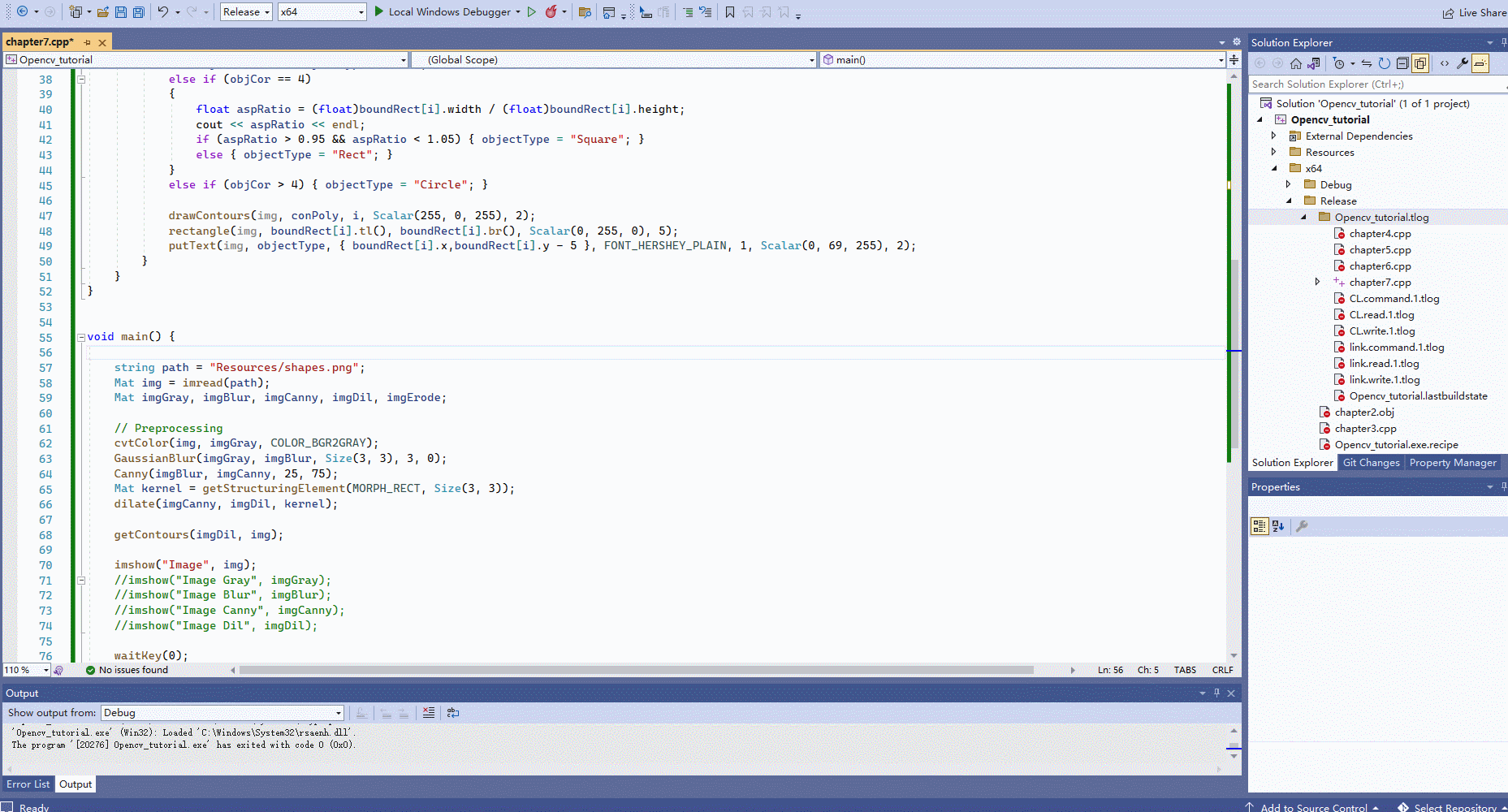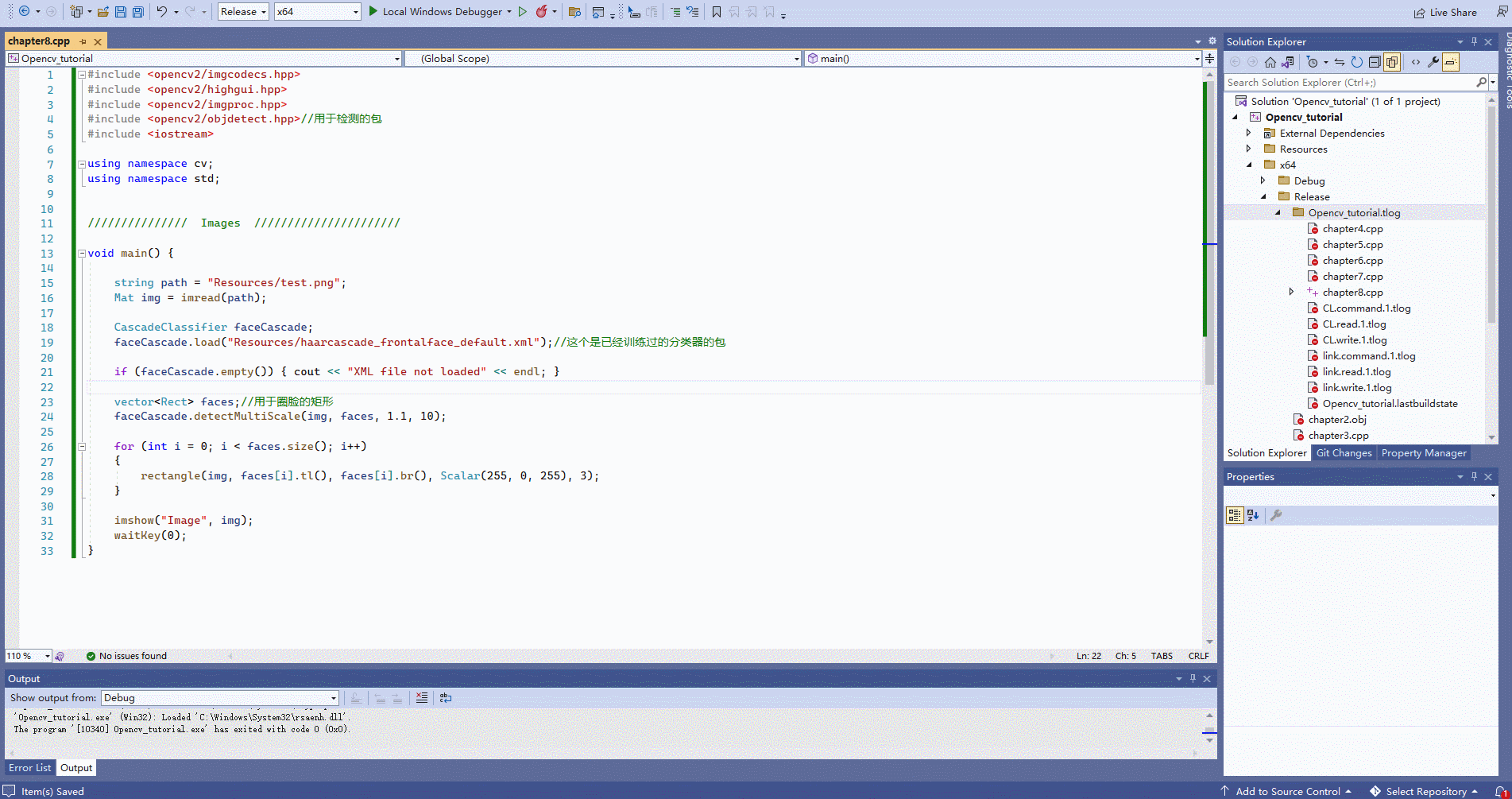opencv基础-印度小哥
基础课程
第一章-读取图片、视频和摄像头
Chapter 1 – Read Images Videos and Webcams
图片放在程序所在文件夹下的Resources/test.png
1.1 opencv读取一张图片并显示:
#include 1.2 opencv读取一段视频并显示:
#include 运行后的效果
1.3 opencv读取摄像头视频并显示:
#include 运行后的效果
注意:由于一个程序只能有一个主函数main(),所有这里我们可以先将chapter1.cpp从source files exclude(不是remove删除,而是取消程序对这个程序的读取)

操作过程:
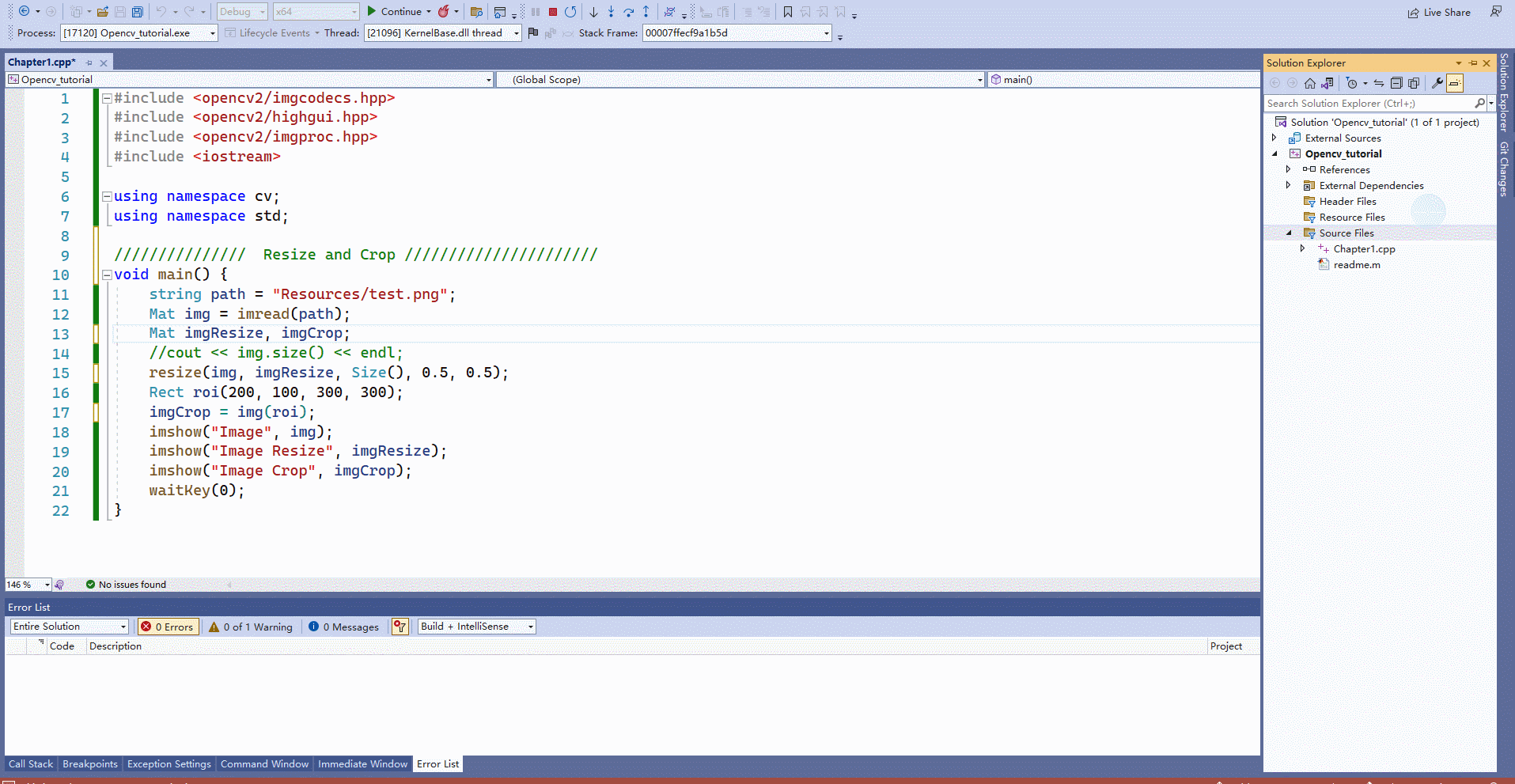
后面如果想把chapter1.cpp程序加载回来的操作:
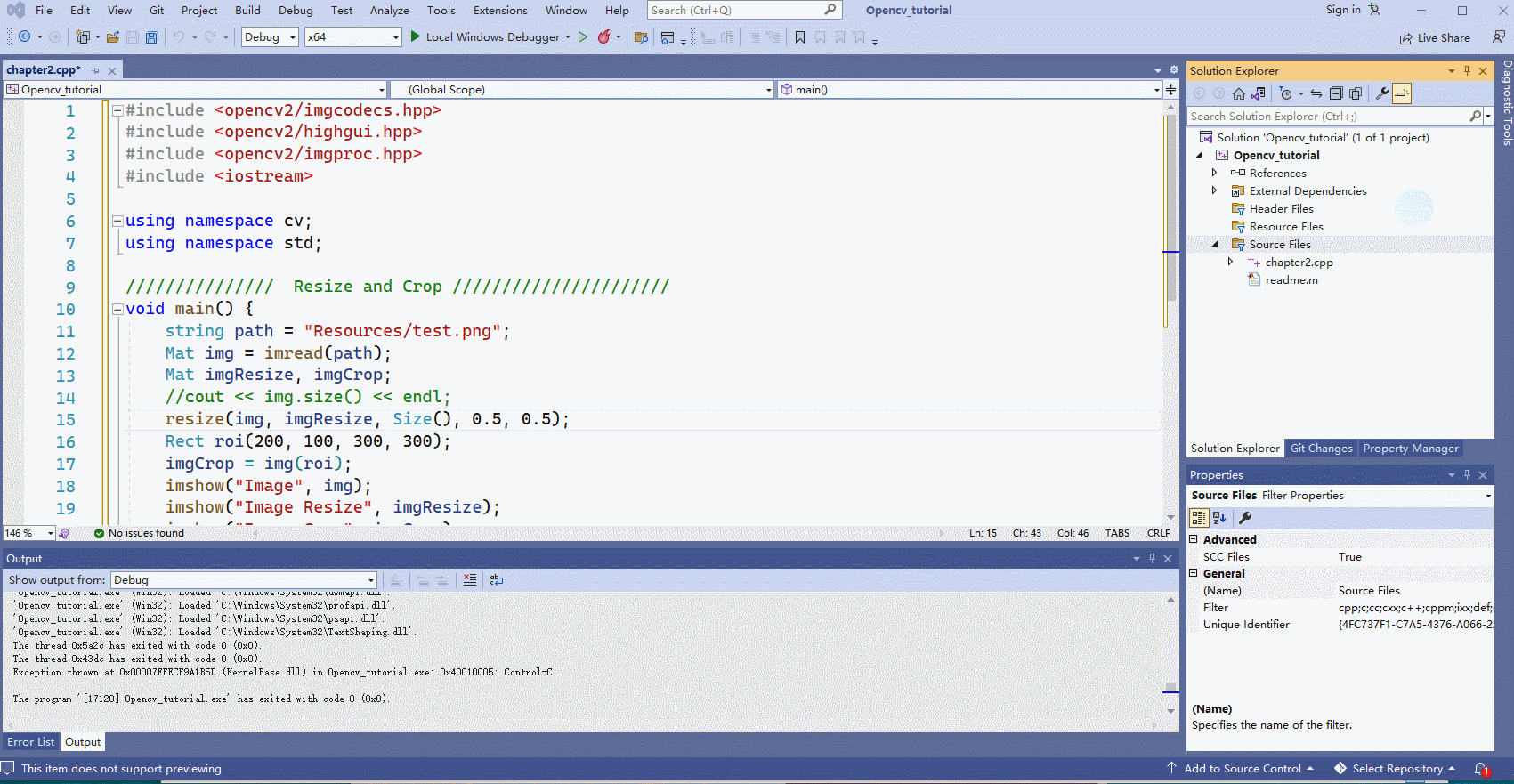
第二章-基本功能
Chapter 2 – Basic Functions
2.1 将图片转为灰度图
#include 2.2 将图片变得模糊
#include 2.3 将图片进行边缘轮廓检测
#include 2.4 将已经进行边缘检测的图片进行腐蚀或膨胀
#include 第三章-调整大小和裁剪
Chapter 3 – Resize and Crop
这里再演示一下新建chapter3.cpp程序,将chapter2.cpp程序 exclude。
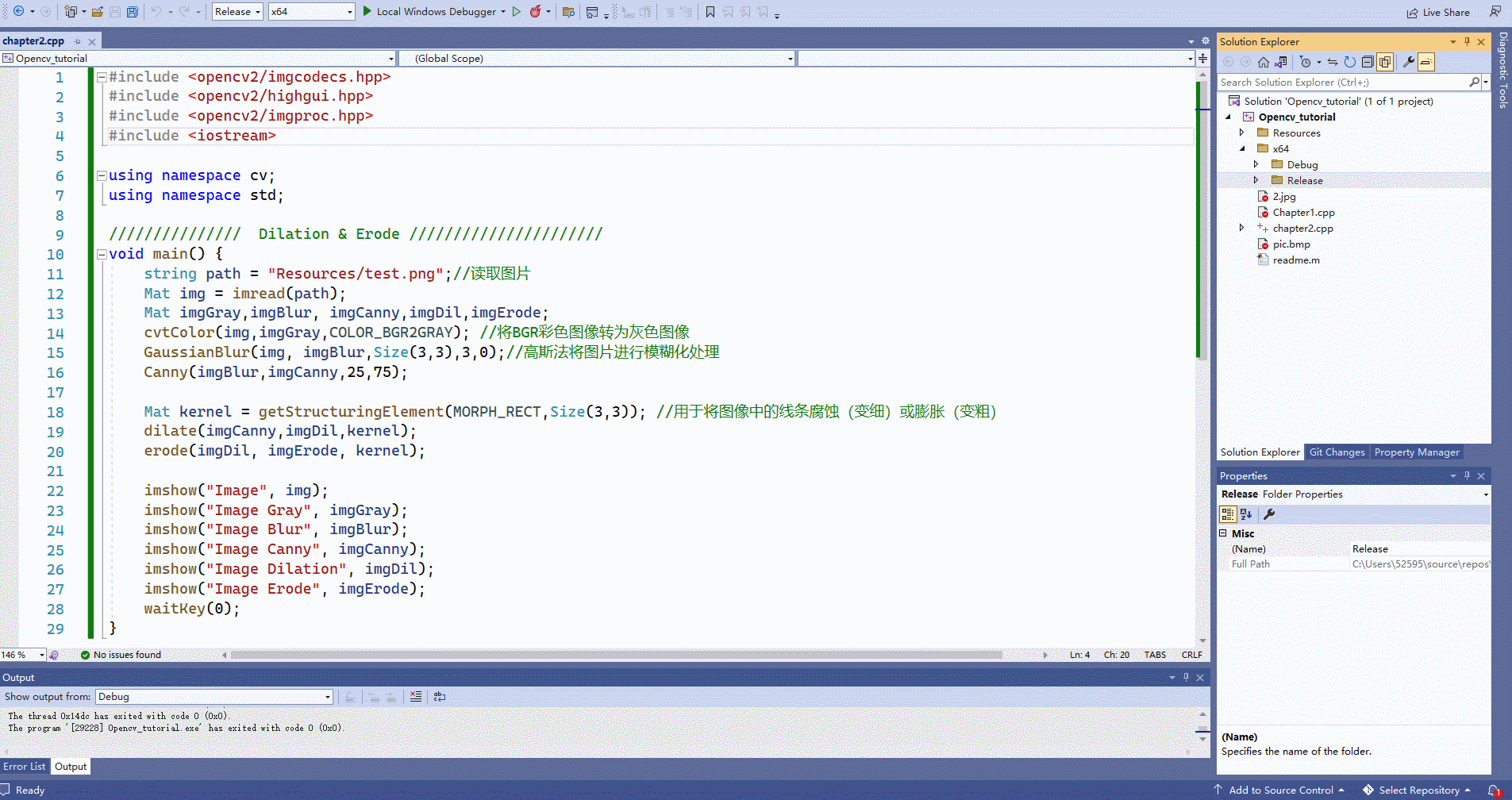
3.1 将图片调整大小、裁剪
#include 第四章-绘制形状和文本
Chapter 4 – Draw Shapes and Text
这里再演示一下新建chapter4.cpp程序,将chapter3.cpp程序 exclude。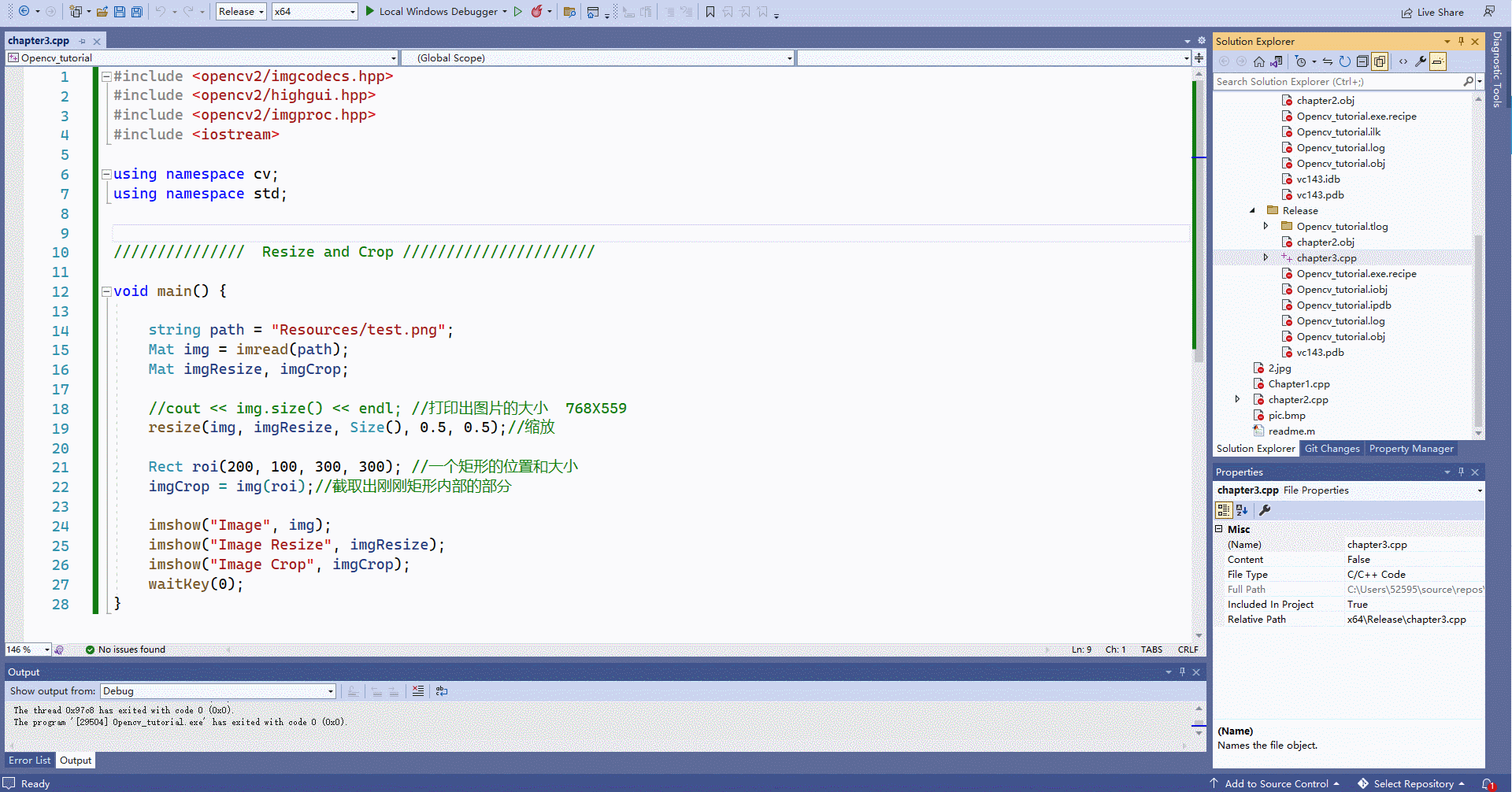
4.1 在图片中绘制形状和写入文字
#include 第五章-将图像进行变形操作
Chapter 5 – Warp Images
5.1 将图片转为灰度图
右键图片,选择其他方式打开-选择画图,然后可以获得图片中不同物体在图片中的坐标(截的动图有点绿…)
左上528,142
左下404,391
右上169,192
右下672.456
#include 实验效果:
第六章-颜色检测
Chapter 6 – Color Detection
6.1 颜色检测
#include 第七章-形状/轮廓检测
Chapter 7 – Shape/Contour Detection
7.1 形状/轮廓检测
#include 第八章-人脸识别
Chapter 8 – Face Detection
#include 小项目
1. 虚拟画家
Project 1 – Virtual Paint
#include 2. 文档扫描仪
Project 2 – Document Scanner
3. 虚拟画家
Project 1 – Virtual Paint


